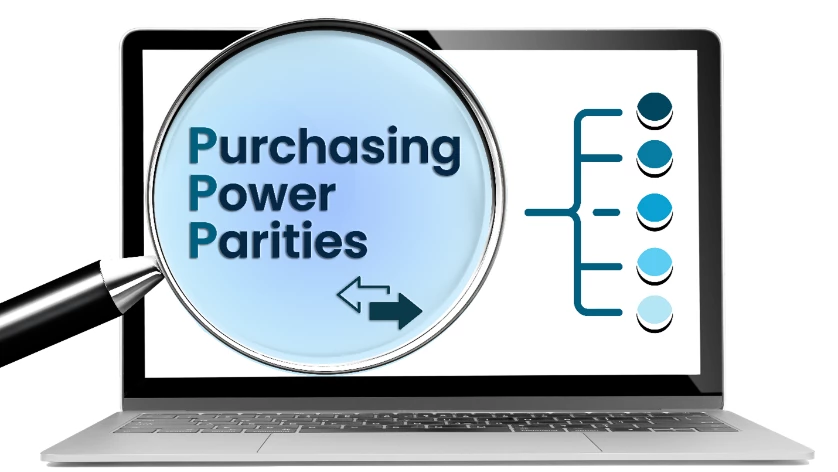Results from the ICP are available at icp.worldbank.org. This blog series, edited by Edie Purdie, covers all aspects of the ICP and explores the use made of these data by researchers, policy makers, economists, data scientists, and others. We encourage users to share their data applications and findings in this blog series via icp@worldank.org.
A new knowledge brief - A comparison of different sources of purchasing power parity (PPPs) estimates - reviews five sources of purchasing power parity (PPP) estimates and explores how they differ in terms of coverage of expenditures under gross domestic product (GDP), frequency, input data, and methodology. In doing so, it helps to inform users – including policy makers, economists, data scientists, statisticians, and others interested in cross-country comparisons of economic indicators and the material well-being of people – of the best data source for their analyses.
The concept of PPPs is well-known and widely used within the field of socioeconomic analysis. PPPs control for the differences in price levels between economies and equalize the purchasing power of currencies. In this way, PPPs show the relative price of a given basket of goods and services in each of the economies in the comparison with reference to a base economy. The primary use of PPPs is to convert volume and per capita measures of GDP and its expenditure components into a common currency, while also controlling for differences in price levels between economies.
PPPs and PPP-based indicators are key tools in data-led policy making and are considered a global public good. The World Bank publication Purchasing Power Parities for Policy Making: A Visual Guide to Using Data from the International Comparison Program provides a comprehensive account of the myriad applications of PPPs and elaborates on their limitations. They are used in administrative applications by public and private organizations, including the European Union, the International Monetary Fund (IMF), and the World Bank, among others.
This new knowledge brief identifies the better-known sources of PPP datasets and discusses their commonalities and differences. It compares the International Comparison Program (ICP) PPPs with those published by (i) the World Bank’s World Development Indicators (WDI), (ii) the Penn World Table (PWT), (iii) the International Monetary Fund’s (IMF) World Economic Outlook (WEO), and (iv) the Central Intelligence Agency’s (CIA) World Factbook.
To find out more, visit A comparison of different sources of purchasing power parity (PPPs) estimates.
Going forward, data from the ongoing ICP cycle, benchmarked to the year 2021, will be released in 2024. The brief will be kept updated upon this and future releases of the ICP, as well as to reflect any changes in PPP data sources.





Join the Conversation